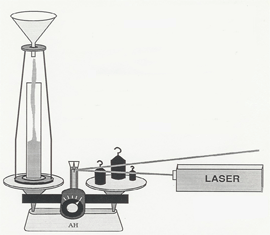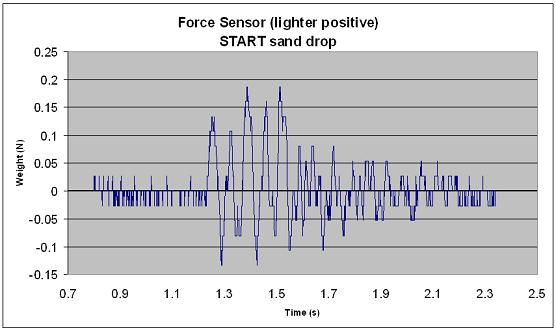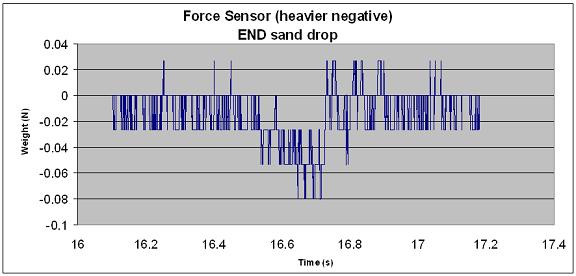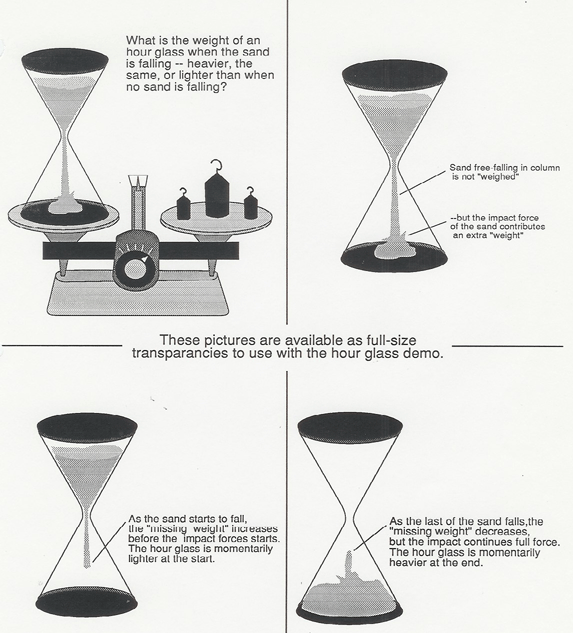
| LECTURE DEMONSTRATION MANUAL | Instructional Research Lab : ucla physics | |
| main page | Weight of an Hourglass |
| table of contents | |
| search | |
|
M.6.11 Weight of an Hourglass |

Does the weight of an hourglass change when the sand is falling? This demo shows the truth! A funnel with the sand held back by a cork and string arrangement is perched to drop sand into a glass beaker on a double pan balance. A laser bounces a beam off a small mirror attached to the pointer of the balance. When you burn the string, the sand starts falling, and the motion of the laser spot on the blackboard indicates the result. A set of transparencies to use with this demo is shown below.
| A movie clip of the typical setup is shown on the right. Note the position of the laser spot as the sand begins to drop and as its level in the funnel changes.
The graphs below were produced with data from a setup using a PASCO force sensor in place of the scale. |
 |
 |

|
|